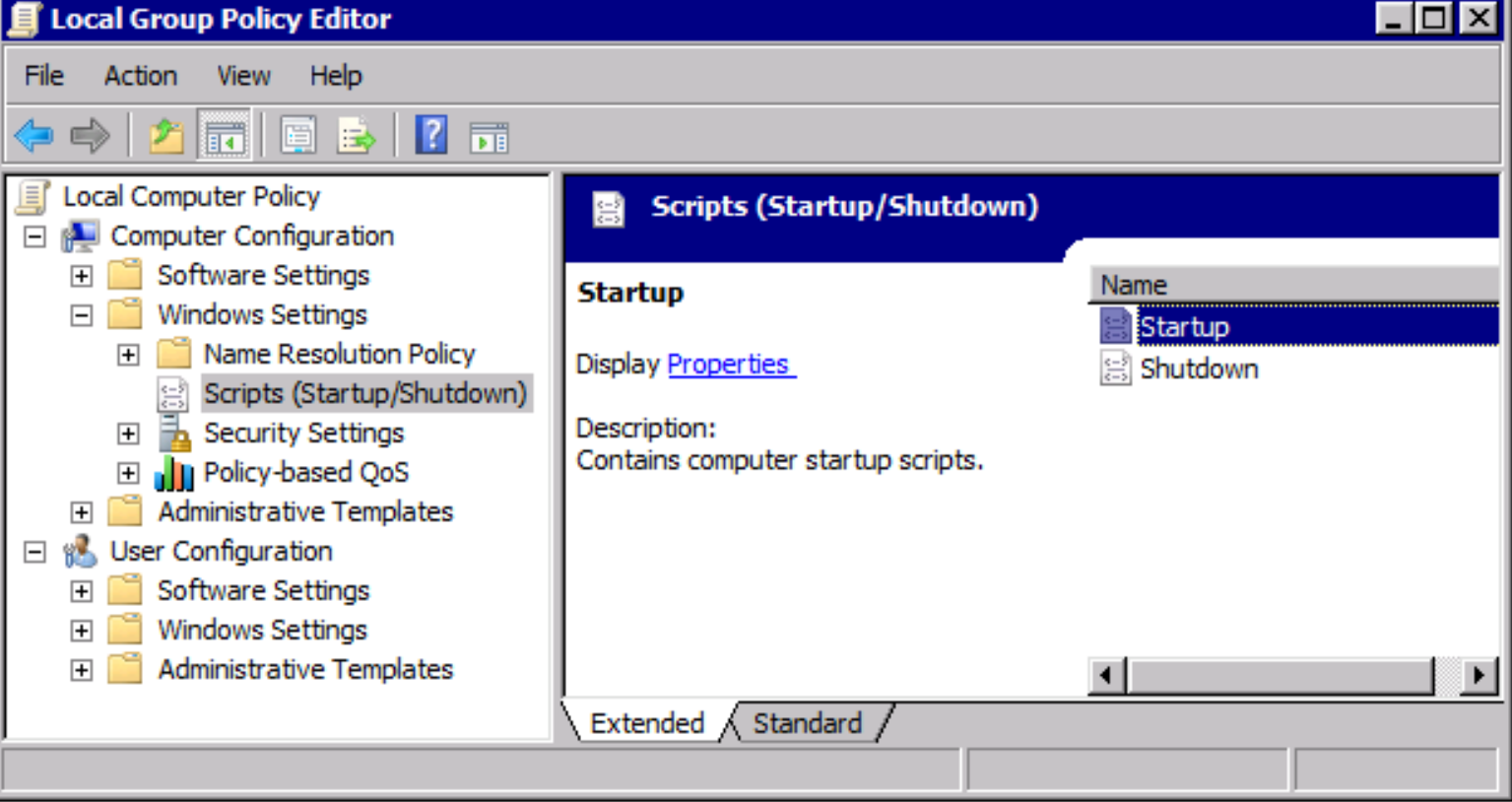# Network storage on Windows
The 4ALLPORTAL can work with SMB-compatible servers using the Windows network drive functionality.
These "mounts" can be used to share the configurations in a cluster or to attach external storage like a NAS as file storage for assets.
# Mount as NT Authority
Since Windows services cannot access mounts that have been created with a user or administrator, the mount needs to be created as "NT AUTHORITY\SYSTEM".
Please note: These mounts appear as "Disconnected Network Drive", but are working just fine.
To do that on every startup, you need to setup a startup script in the computer configuration. These scripts run as the Local System account and are able to create mounts for services.
# Setup a startup script
Open the
Group Policy Management Console: Rungpedit.mscin Windows' Run-dialog (Win + R)Go to path
Computer Configuration\Windows Settings\Scripts (Startup/Shutdown)
Double click
Startupand add a new script:- Create a new
.cmd-file on your local filesystem and add it to the startup script list. - The script should contain commands to mount the external share. Remember to put your credentials, since the Local System account cannot forward any Active Directory credentials. Please take a look at the Microsoft documentation (opens new window) for further explanation.
- Example script:
@ECHO OFF net use Q: \\share01.organization.tld\4allportal "secr3t" /USER:ORG\shareuser /PERSISTENT:YES
- Create a new
Click "OK" and reboot the server. The network mount should now appear as "Disconnected Network Drive".
# 4ALLPORTAL mount configuration
You now need to configure the path in the 4ALLPORTAL mount configuration:
- Open the 4ALLPORTAL and go to
Administration/DAM/Mount Configuration. - Open the mount entry you would like to edit and enter the drive location as the "Root directory" (for example:
Q:\assets). - Depending on the network share you might need to uncheck "Use File-IDs" and "Use Volume-IDs".
# Troubleshooting
To debug the net use command, use the Microsoft PSTools (download it here (opens new window)):
- Run an elevated Command Prompt.
- Go to the extracted PsTools folder with "PsExec.exe" in there.
- Run
psexec.exe -i -s cmd.exe. - Check with
whoamithat you are the "NT Authority".- Troubleshoot your
net usecommands. net use L: /deletedeletes network drives.
- Troubleshoot your
